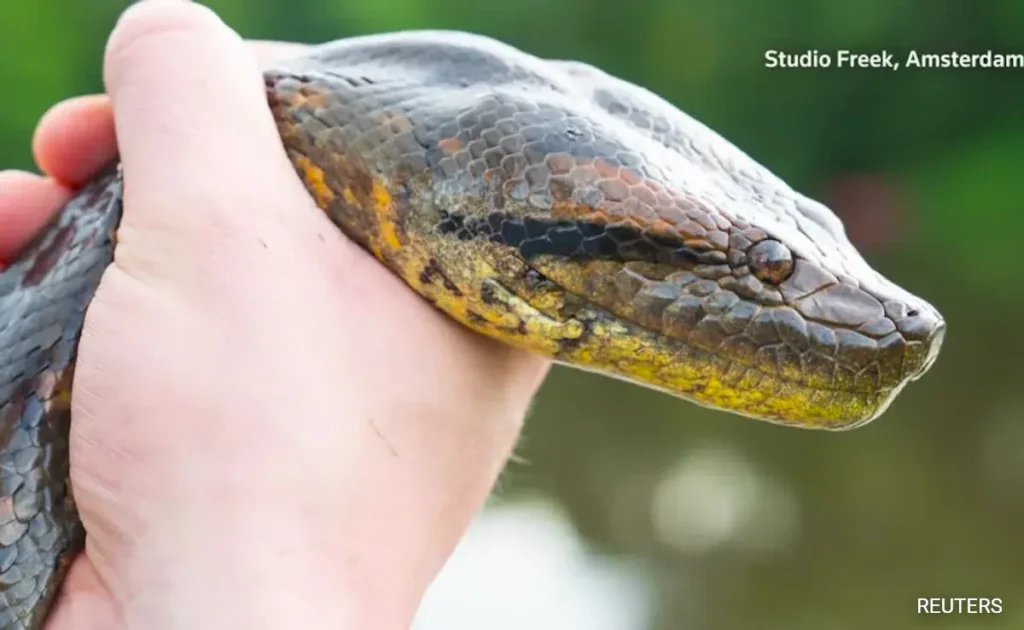World’s Largest Snake Found in Ecuador? – Historic Discovery 2025
In a groundbreaking revelation, scientists have identified a new species of anaconda World’s Largest Snake Found in Ecuador in the Amazon rainforest, marking a historic discovery in herpetology. Dubbed the Northern Green Anaconda (Eunectes akayima), this colossal serpent is now recognized as the world’s largest snake, both in length and weight. The discovery not only reshapes our understanding of biodiversity in the Amazon but also underscores the critical role of indigenous knowledge in scientific breakthroughs.
Table of Contents
The Discovery of the Northern Green Anaconda

The expedition that led to this monumental finding took place in the Bameno region of Baihuaeri Waorani Territory in the Ecuadorian Amazon. Led by Professor Bryan Fry from the University of Queensland, the team collaborated closely with the Waorani people, who have long spoken of massive anacondas inhabiting their lands. The largest specimen encountered measured 6.3 meters (20.7 feet) in length and weighed approximately 200 kilograms (441 pounds). However, Waorani accounts suggest the existence of even larger individuals, with reports of snakes reaching up to 7.5 meters (24.6 feet) and weighing 500 kilograms (1,100 pounds)
Genetic analyses revealed a 5.5% divergence between Eunectes akayima and its close relative, the southern green anaconda (Eunectes murinus), indicating that these species split nearly 10 million years ago . This level of genetic difference is significant, especially considering that humans differ from chimpanzees by about 2%.
Ecological Significance
As an apex predator, the Northern Green Anaconda plays a vital role in maintaining the ecological balance of the Amazon rainforest. Its diet includes a variety of species such as fish, rodents, deer, and caimans, helping to regulate these populations and ensure a healthy ecosystem . The presence of such a top predator is indicative of a robust and functioning ecosystem, highlighting the importance of conserving its habitat.
Indigenous Knowledge and Collaboration
The discovery of Eunectes akayima would not have been possible without the invaluable knowledge and guidance of the Waorani people. Their deep understanding of the local environment and its inhabitants led researchers to areas where these massive snakes reside. Recognizing this contribution, the species was named using the Cariban term “akayima,” meaning “The Great Snake,” honoring the cultural significance and linguistic heritage of the indigenous communities .
Threats and Conservation Efforts

Despite this remarkable discovery, the Northern Green Anaconda faces numerous threats that jeopardize its survival. Deforestation, driven by agricultural expansion and infrastructure development, has led to significant habitat loss in the Amazon basin. Additionally, oil extraction activities have resulted in pollution, with studies showing that anacondas and other aquatic species accumulate harmful petrochemical metals, posing risks to both wildlife and human populations.
Climate change further exacerbates these challenges, leading to alterations in rainfall patterns and increased frequency of extreme weather events, which can disrupt the delicate balance of the rainforest ecosystem. Conservation efforts must prioritize habitat protection, pollution control, and collaboration with indigenous communities to ensure the survival of this newly identified species.
Global Impact and Future Research
The identification of Eunectes akayima has significant implications for biodiversity research and conservation strategies. It underscores the importance of genetic studies in uncovering cryptic species and highlights the need for comprehensive assessments of species distributions and population statuses. Future research will focus on understanding the ecological requirements of the Northern Green Anaconda, its reproductive biology, and its interactions with other species in the ecosystem.
Moreover, this discovery serves as a reminder of the vast unknowns that still exist within the Amazon rainforest and the critical role that indigenous knowledge plays in unveiling these mysteries.
Conclusion
The historic discovery of the world’s largest snake, the Northern Green Anaconda, in Ecuador’s Amazon rainforest is a testament to the wonders that nature still holds. It emphasizes the importance of preserving biodiversity, respecting indigenous knowledge, and taking concerted action to protect vulnerable ecosystems. As we continue to explore and understand our natural world, such discoveries inspire awe and reinforce our responsibility to safeguard the planet’s rich and diverse life forms.










